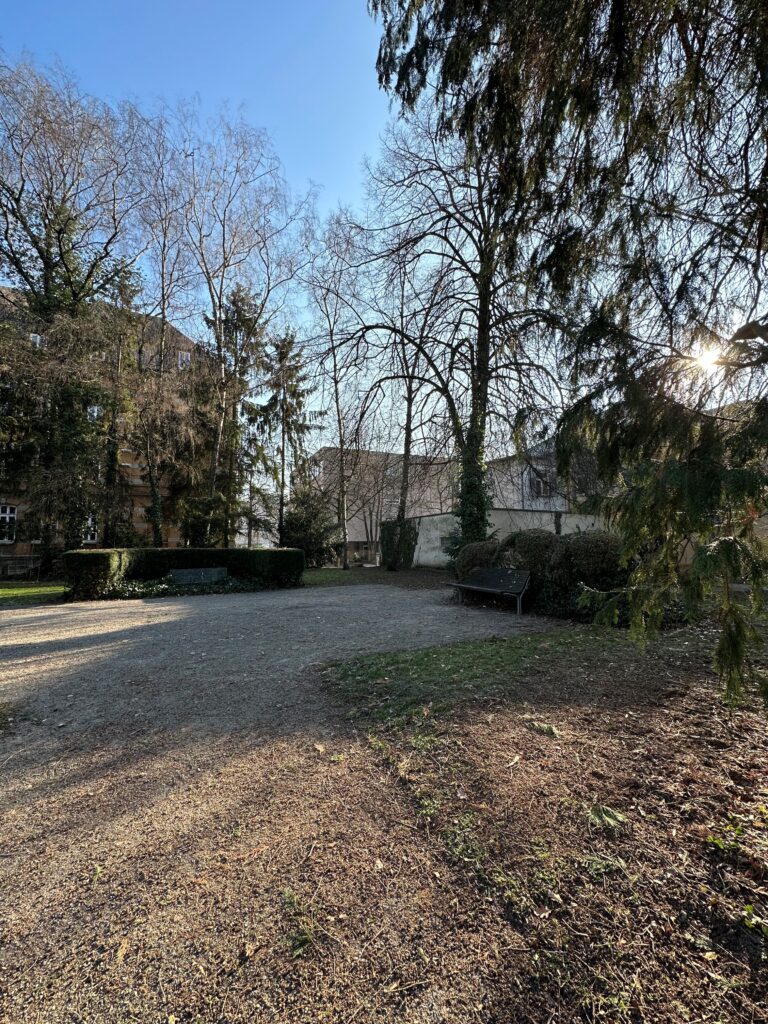Synagogue Square
Until the Program/Kristallnacht on the night of November 9-10, 1938, the synagogue of the Jewish community stood at the site, which now presents itself as a park-like area. A memorial plaque still commemorates the house of worship to this day. The slightly set-back building, rising in the so-called Swiss style to the south of the square, was the residence of the rabbi, where Dr. Aron Tänzer among others had his seat. It was built in the year 1880.
The origins of the Jewish community in Göppingen lie in Jebenhausen. In 1777, the local nobility, the Barons of Liebenstein, settled several Jewish families in the village. Over the following decades, Jebenhausen developed into one of the largest Jewish communities in all of Württemberg. With the legal equality of Jews, they gradually left Jebenhausen, emigrating or moving to the emerging industrial city of Göppingen, where a Jewish community was established in 1867.
The synagogue was built in 1880/81 according to the plans of Christian Friedrich von Leins, who was a professor at the Technical University in Stuttgart. The building, resembling a basilica with a dome, rose above a square floor plan. In addition to the actual worship space with galleries and an organ, it contained an entrance hall and a meeting room with cloakrooms. The synagogue had a total of 278 seats. As mentioned earlier, the end for the house of worship came with the Nazis, who set it on fire on the night of November 9-10, 1938. SA members prevented the nearby fire brigade from extinguishing the building, causing it to burn down completely. The burnt ruins were then demolished and cleared away.
We now return to the Freihof Gymnasium and walk along Pfarrstraße towards the castle.

